2022 Spring / Summer
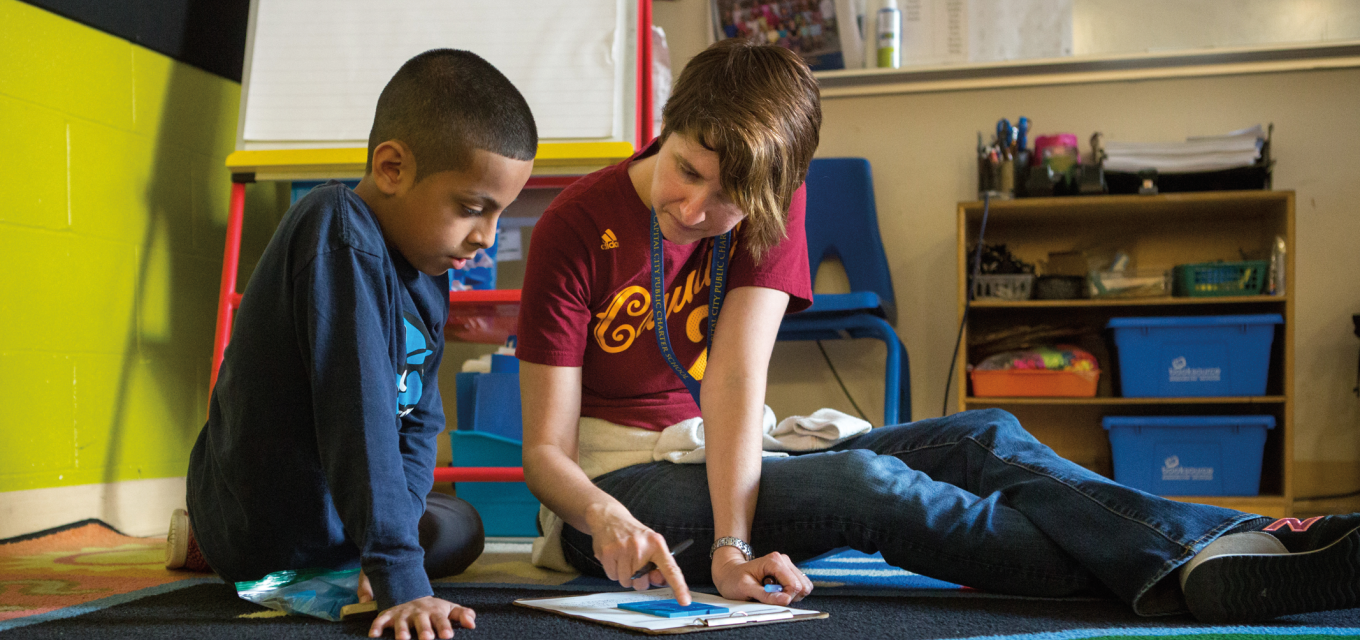
Student teachers rise to the challenges of the pandemic
CEHD student teachers find new ways to educate their students in the midst of COVID-19.
“During the COVID-19 pandemic teachers from the U have been incredible,” says Ruth Krider, a second-grade teacher and mentor in the St. Paul Public Schools. “I’m using the term co-teachers, because that’s what they have proven to be: professional, empathetic teachers who have gone, and continue to go, above and beyond the letter of their assignment. Co-teachers have brought students into their online homes; have provided an ear, a shoulder, a helping hand; and have entered their new profession with positive intentionality about the assets each and every child brings.”
No matter their name, co-teachers, student teachers, or teacher candidates, they have remained a steadfast support system for students of all ages. Their commitment to the education field deserves honor and celebration.
“I’ve been amazed with what our teacher candidates have done during this time,” says Ann Ruhl Carlson, early childhood licensure coordinator for the Institute of Child Development (ICD). “It is just incredible.”
Meeting the challenge
Before the pandemic, teacher candidates were involved in traditional teaching experiences in face-to-face environments. “No one was prepared for teaching remotely,” says Department of Educational Psychology Director of Undergraduate Studies Kathy Seifert, member of the Academic Behavioral Strategist licensure team. “No one knew what that would look like, how students would respond, or how teacher candidates would adjust to it.”
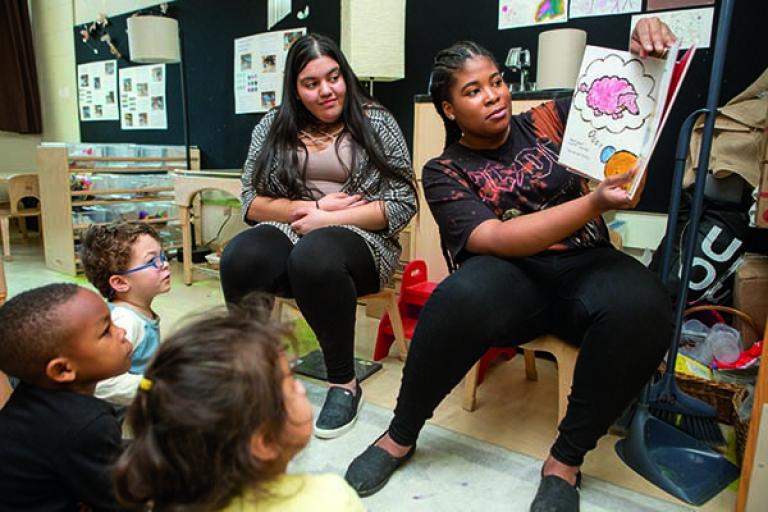
Jennifer Garrison, MEd ’20 in early childhood from ICD, teaches at Minneapolis’ Marcy School for the Arts, which serves elementary students. She did online instruction with very young children for the first sixth months of the 2020-21 school year and switched to face-to-face learning for the remainder of the time.
“It was a very busy time, everything was always changing,” she says. “It was also hard because I was a first-year teacher, so I was learning everything about the curriculum and the district while also adapting everything to distance learning.”
Seifert says student teachers had to navigate remote instruction with little more than guidance and support from their instructors. “It’s as if someone said, ‘You need to set aside all the teaching methods you learned and relearn new methods by tomorrow, and all you get is a computer. Your professors can’t help you because they haven’t been through it before either,’” she says.
Garrison was not dismayed. She became a teacher because she loves learning and working with kids. “I want to instill a love of learning in my students as well,” she says. Adjusting to the pandemic was going to be just another learning opportunity for everyone. “Both students and teachers had to adapt to the new teaching and learning style,” she says.
Garrison says she had some great colleagues to plan with, and they came up with strategies to make distance learning as hands-on and play-based as possible. “The students showed great resilience and were excited about their first experience at school even though it was online,” she says.
Marie Lister, a teaching specialist at the Child Development Lab School, says the student teachers not only rose to the occasion, but in new ways. “The old hierarchy went away,” she says. “Student teachers created beautiful learning opportunities and really creative ways of interacting and talking to the children that I wouldn’t have thought of.”
Bridget Stephens, who is in the academic behavioral strategist (ABS) program in the Department of Educational Psychology, says navigating online connections with her students was the most challenging. She taught fully remote at Marcy School for the Arts. “Kids were at home taking care of siblings, and siblings were also doing distance learning so we’d get a lot of feedback,” she says. “The other challenging thing was helping kids navigate through certain programs.”
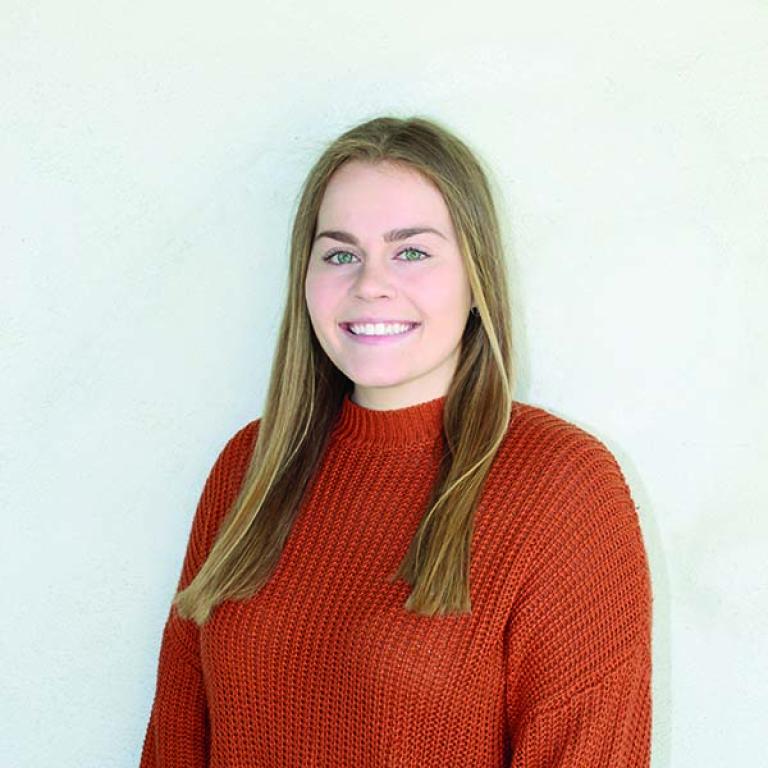
Online education, however, did provide some unexpected advantages. “What distance learning showed was that students learn differently. Kids got to try out a new way to learn,” Stephens says. “Some kids totally excelled in distance learning.”
Innovative teaching plans were especially important for early childhood education. “Young children are not meant to learn on a screen,” Carlson says. “Developmentally, they need to be active, touching things. My students had to face the challenge of how to do this in the wrong modality for early childhood.”
She says that she was blown away by her student teachers’ creativity in online instruction. “They would be talking to the children, but say ‘go get your packet of materials’ they provided for the children or ‘go and find something in your house,’” she says. “They were able to provide more concrete learning experiences essentially in three dimensions when they were working in two dimensions.”
Mitigating uncertainty
Rosalie Fuqua is currently completing her student teaching in a first-grade classroom at Highlands Elementary in Edina. She will earn her MEd in June and plans to move to Washington state and have her own kindergarten or first-grade classroom.
She says the uncertainty generated by the pandemic affected her teaching experience the most. “You never really know what you’re walking into when you get to school each day,” she says. “Colleagues and students are constantly absent, valuable school-wide events are canceled, and schedules change on a dime.” Fuqua has had in-person classes all year, and she says that has helped mitigate the uncertainty.
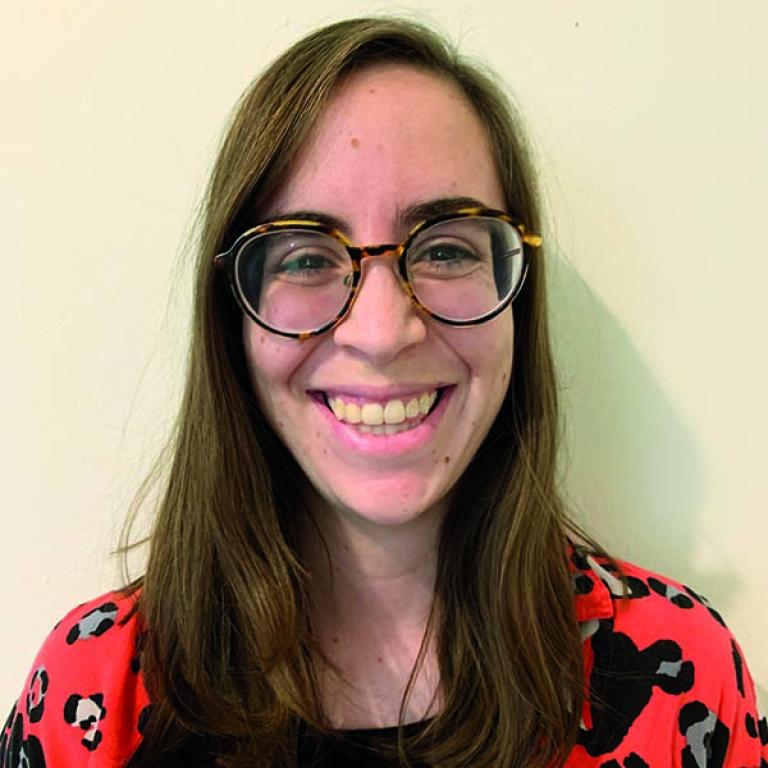
In fact, being able to spend time every day with her students, experience their enthusiasm, and feed off their energy was revitalizing. “Those relationships provide so much motivation to come into school every day,” she says.
A particular challenge in face-to-face instruction was adapting to teaching while wearing masks. “Much of communication is nonverbal, and it’s really important to be able to see facial expressions, especially for young children,” she says. “I’ve been impressed with the students and teachers’ abilities to adjust to not being able to see one another’s faces, or hear them clearly.”
Working through the pandemic also has taught Fuqua flexibility. “As someone who tends to rely heavily on routine and regularity, this has been a fabulous learning experience,” she says. “I am now much more comfortable dealing with last-minute changes as they come, and am able to better adapt my teaching in the moment, which has made me a more effective teacher.”
Building stronger relationships
These innovative lesson plans help drive relationship-building with the students, particularly important in online instruction, says Jana LoBello Miller, co-director of elementary teacher education in the Department of Curriculum and Instruction (C&I). “They are moving beyond set curriculum and putting the student first,” she says. “This is a culture of care.”
Ruth Krider says while her student teachers were in distance learning, they would stay online for hours with students. “Some time was troubleshooting technological issues, some was helping with learning activities, and some was authentic bonding with children,” she says. “I recall one breakout room hangout session where my co-teacher colored, chatted, and connected with a group of students who were craving contact beyond their own families.”
Stephens says she found it easier to connect with parents. “With Google Meet, we worked with their schedules and had more parent engagement,” she says. “I was able to get better connections with parents, which was cool.”
Working with families via distance learning also served to strengthen relationships. “I could observe teacher candidates engaging with families and parents in ways I never observed before,” Seifert says. “Our teacher candidates had to teach many parents the nuances of remote instruction as they were learning themselves.”
Strong bonds were also formed among the student teachers. “The student teachers I had are best friends now,” Lister says. “I think that time together, that uncertain time in spring of 2020, bonded them together. I saw the student teachers dig deeply into their experiences in the program and also into their support for each other. I saw student teachers take care of each other and lift each other up in beautiful ways.”
For Gavin Pratumwon in the C&I mathematics education program, the strength of the relationships he developed with staff and students was an unexpected benefit.
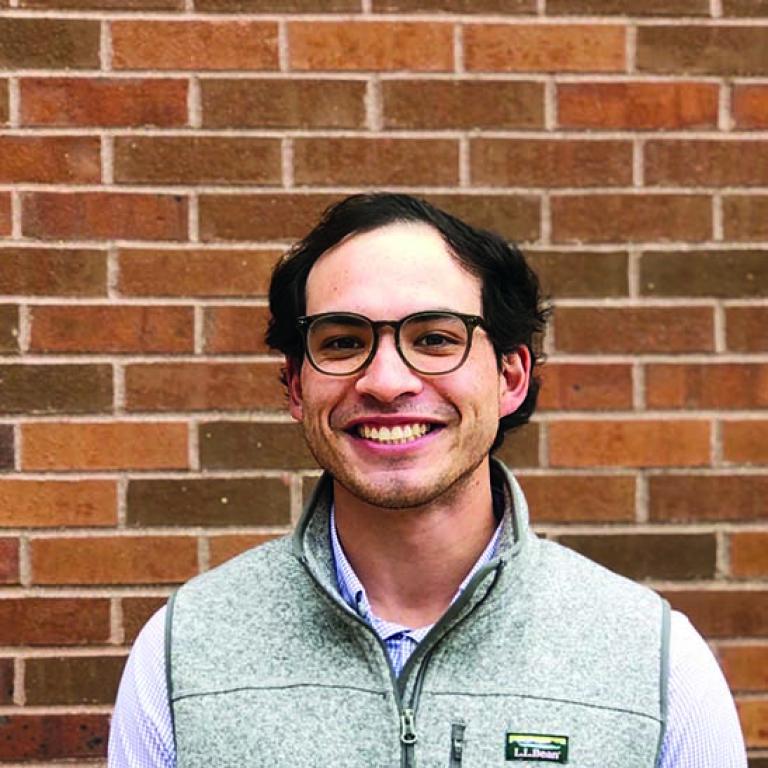
“I think we all knew everyone needed help in some manner, and we leaned on each other and trusted each other in order to help ourselves and those around us,” says Pratumwon, who student-taught as a paraprofessional at Edina High School. “The biggest thing I learned is that we can make a plan, but we always have to be ready to tweak things and go with the flow. There are going to be things that affect us that are out of our control, and that’s OK. I think just taking that mindset with me will help me in my career in creating a generally strong and dynamic classroom and not worrying about those external factors.”
Finding stability
“As teachers, we like to be in control. We like to plan our days and plan our hours. This was the opposite,” says Adriana Castelo about her student teaching experience during the pandemic.
Castelo is a student in the dual language immersion program in the Department of Curriculum and Instruction. Originally from Ecuador, she came to the University as an exchange student and started her master’s program in 2020. She student-taught third grade at Eagle Heights Spanish Immersion in Eden Prairie.

“There was never stability in terms of the day I would teach. You could get one student online and 19 in person and the next day 10 in person and 10 online,” she says. “That was the most challenging part—the lack of stability.”
She found the stability she needed in the mentor teacher she was paired with. “She was fantastic. I couldn’t have asked for anyone better,” she says. “She was a great mentor in all areas and gave me the best student teaching experience.”
Castelo says the experience proved to herself and to every teacher that they can do anything when they work together. “We can do virtually anything to teach children, regardless of the place they are learning from—behind a screen or in person,” she says. “The pandemic—besides all the terrible things we’ve gone through—has shown me how we can get through this if we are together.”
Looking ahead
As students and teachers return to in-person instruction, lessons learned from the pandemic won’t be quickly forgotten. “I don’t think our teacher candidates will ever walk into a classroom without remembering what it was like to not have a classroom,” Seifert says. “That brings a certain appreciation for what they do that no one before or after them will have.”
But as the return to in-person classes gets underway, new challenges have emerged. “We learned that kids really don’t have the opportunity to learn social and emotional skills in the online environment and how critical that is,” Carlson says. “My students are really focusing on those skills that those children didn’t get last year when they weren’t in the classroom.”
Stephens suggests there should be a focus on rebuilding social and emotional skills. “One day take a step back from the standard curriculum and go through social skills, just so we can be able to sort of get back to what it was like to be going to school for a full day, to make you feel more comfortable in school again,” she says.
Whatever is needed, however, we can be sure that our student teachers are more than ready and willing to meet the challenge.
“I see a fire in them. I see an energy,” LoBello Miller says. “There’s a certain type of joy coming out and framing what it means to be a teacher.”
Not losing sight of your love for the job
“I have always wanted to be a teacher since I was little. I always loved my teachers and was super excited about school,” says Natalie Fox, a student in the Department of Educational Psychology’s academic behavioral strategist (ABS) program. “It was not until high school that I wanted to go toward special education. We had a field experience in high school where I went back to my elementary school and had a placement in special education. I loved the kids and the environment.”
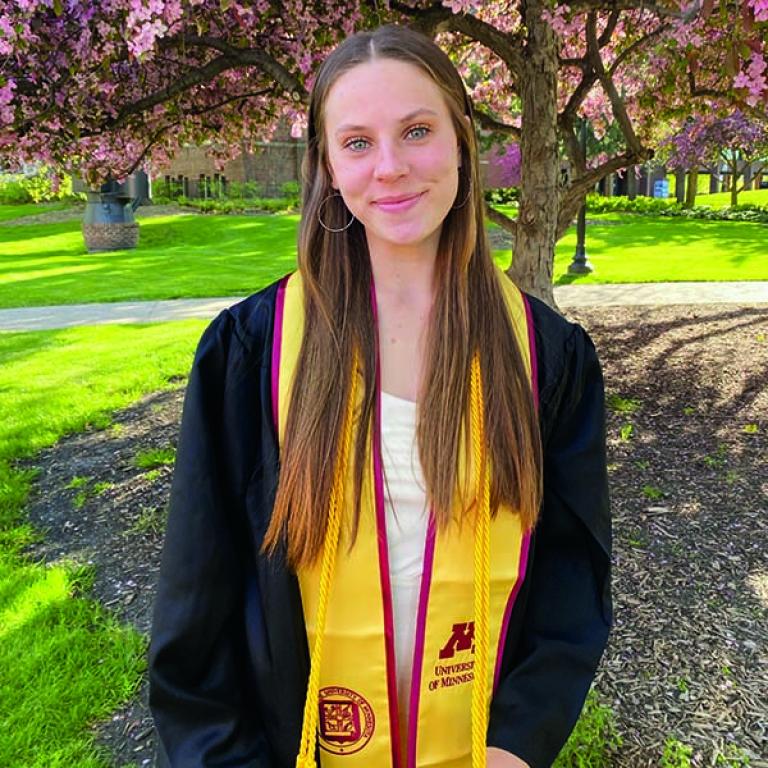
Last semester she was at Dowling Urban Environmental School (now Michael Dowling Elementary School) in Minneapolis working with third- through fifth-grade students who have a wide range of abilities.
“Initially we were fully online. I woke up every day and sat in my bedroom with a whiteboard and laptop and tried my hardest to develop relationships with these students who didn’t know who I was,” she says. “That shifted pretty quickly as I was good at making connections with students. I built those relationships right away.”
Right after spring break, Fox was brought in for in-person instruction and found herself agreeing with others that working in both online and face-to-face complemented each other. “We didn’t expect distance would be beneficial, but it was nice to work the kinks out online and learn more of my teaching style,” she says. “And I have a grasp of what works and what doesn’t when you are on the screen.”
And some challenges can only be faced in the classroom. “The biggest takeaway is how much you have to let things brush over your back. You can’t let something that happened at 8:15 affect you the rest of the day,” she says. “You have to have a forgive-and-forget mentality.”
Fox’s final thought perfectly sums up the mindset of all of CEHD’s student teachers as they persevered through the uncharted waters of a pandemic: “It didn’t affect my joy for the teaching,” she says. “I realized that whatever the challenges thrown at me, I still have love for my students and the job I’ll be doing.”